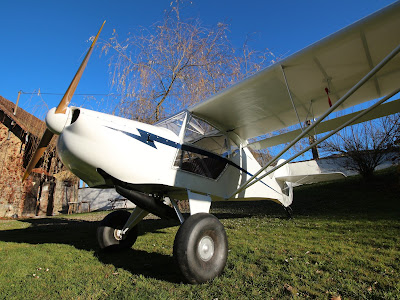
Big day today, first 2 flights after re-build. A week ago I did my ground tests. All satisfactory, all appeard normal. But I had decided to take it easy and think it through before the first flight.
I have spent a week thinking and now it was time...
Already last week my Simonini Victor 2 started on first try. No issues starting this time, the new spark plugs appears to have fixed the issue with oil filled plugs. The impression of thrust on the ground with the new propeller is impressive, I clearly get more out of the enginnge now than with my old 3 blade with too hich pitch. At least in terms of take off performance and that was the primary objective.
Shorter takeoff than what I'm used to and really impressive climb. All appears normal. Test start at level flight. I use my new "poor man's Sonex trim" to trim the plane.
 |
| Look, no hands..! |
Believe it or not, just under 5000 RPM, I could fly hands free and by weight shifting, i.e. by leaning to one side or the other, make the plane turn... No adjustements needed...
This is too good to be true. Checked the flapperons for flutter at minimum deflection and no reveres tendencies at full deflection. Nothing. Even the pilot appeared to be up to the task after 2 years of no flying but it should be said that the air was perfectly calm and stable.
The lift reserve indicator was, naturally, way off during the first flight. I made a slight adjustment for the second flight and got pretty close to a good indication of stall. Some fine tuning still needed.
I feel just like after my first solo flight. Proud and happy.



































